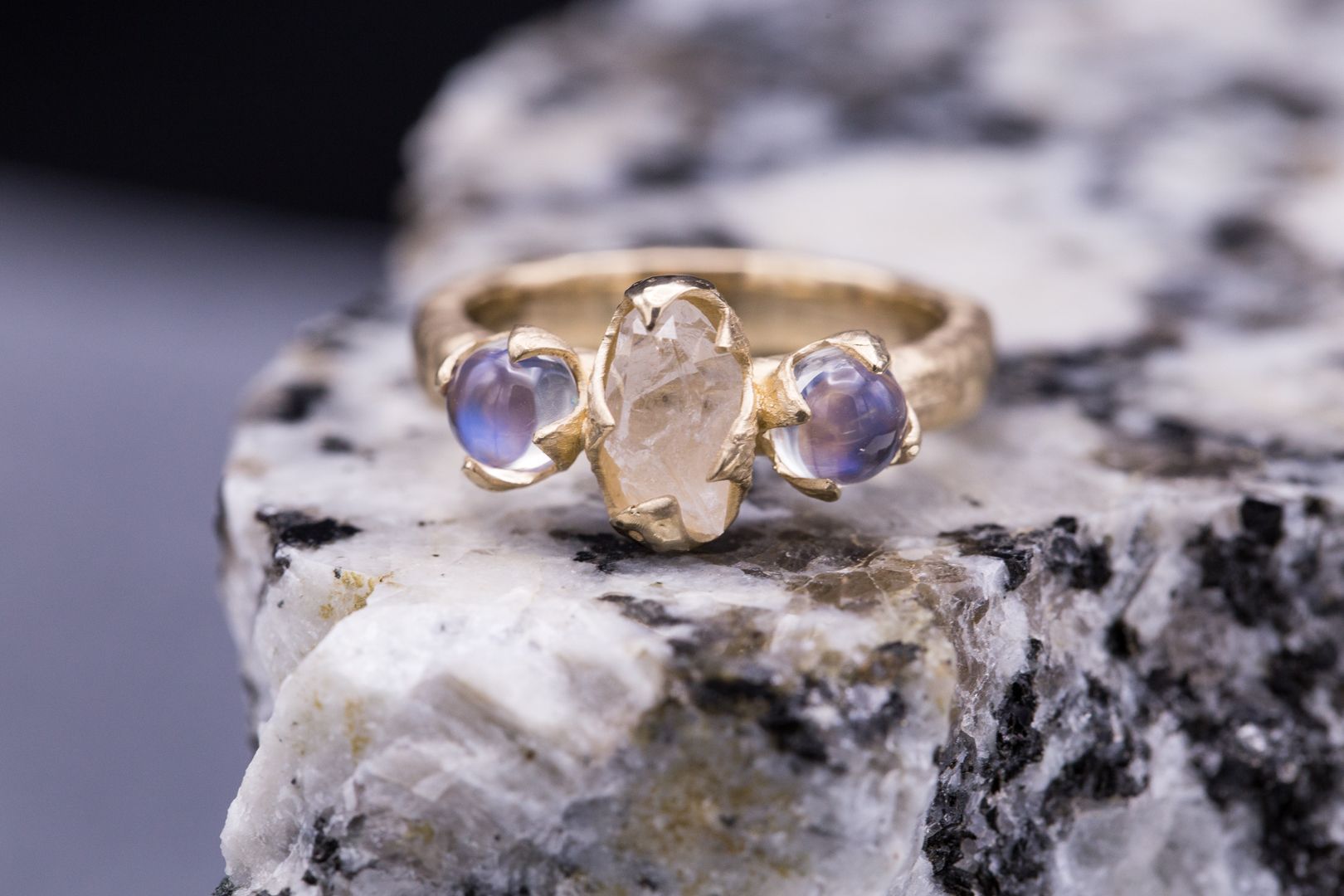Raw Stone Jewelry Design and Care
Raw stone jewelry is trending. Read this article for tips on incorporating raw stones into your jewelry designs and cleaning these gems.
2 Minute Read
Druzy
When minerals grow as plates or in geodes, the surface of small, sparkling crystals is called druzy. Whether as a backdrop for faceted stones or a feature in itself, a piece of druzy adds a unique texture to a jewelry item. Varieties of quartz, garnet, and calcite can form druzy, but rarer minerals can also develop this way. Druzy is available in many colors, including hot pink cobaltocalcite. Some dealers coat quartz druzy with gold or titanium or dye it to create bright and uniform colors.
Crystals
The natural geometry of large, terminated crystal specimens makes them great, eye-catching statement pieces. While quartz is a popular choice, tourmaline can also form impressive, attractive crystals. Pleochroic minerals, such as iolite, also make interesting raw specimens.
Water-Worn Rough
If you have a piece of rough lying around that's just not quite facet-grade, it can still make for interesting jewelry. Stringing a stone as a bead or building a cage around it can be a great way to use it, especially rough with great color but an unfortunately placed inclusion.
Opaque Stones
Opaque stones with interesting inclusions or vibrant color can also be fascinating additions to your jewelry designs. If the stone has an attractive texture without any polishing and no sharp edges that will snag, you can set it in jewelry as a raw stone. Opaque quartz matrix often contains patterns of inclusions. Turquoise and lapis lazuli can have great unpolished color and texture.
Sliced Stones
If you're more of a traditionalist when it comes to cut and polish, stone slices can combine a raw stone feel with a bright and shiny surface. Geode slices are an interesting choice, as their hollow interiors open up many options for creative jewelry design. Banded agate and watermelon tourmaline are more traditional sliced stone options. On the other hand, if you're looking for a rarity, trapiche and trapiche-like gems are sure to impress.
Raw Stone Jewelry Care
Like faceted gems, raw stones require some care and cleaning. Proper storage will minimize dust buildup, but, eventually, cleaning will become necessary. However, rough surfaces may make this task more difficult.
A very gentle stream of compressed air is a good first step to removing loose dirt and dust. Then, as long as your specimen isn't water soluble (such as calcite druzy) or porous (such as turquoise), let it soak in warm water with mild soap or detergent. A soft brush can then remove whatever dirt remains. Be especially careful with druzy specimens, as some of the tiny crystals can be removed by physical cleaning. After shaking off excess water, dry the jewelry with another gentle stream of compressed air or a hair dryer on the "cool" setting.
Sonic cleaning and steam cleaning can harm druzy specimens. However, steam cleaning is appropriate for raw stone jewelry that isn't heat sensitive.
Addison Rice
A geologist, environmental engineer and Caltech graduate, Addison’s interest in the mesmerizing and beautiful results of earth’s geological processes began in her elementary school’s environmental club. When she isn’t writing about gems and minerals, Addison spends winters studying ancient climates in Iceland and summers hiking the Colorado Rockies.
Related Articles
The Power of Advertising: How the Marketing Juggernaut Behind the Barbie Movie Rocked the Gem World
Emerald Quality Simplified
Choosing a Spinel Engagement Ring Stone
19 Stunning Yellow Gemstones (With 9 Best Picks for Jewelry)
Latest Articles
Brazilianite Value, Price, and Jewelry Information
Ruby-Glass Composites vs Leaded Glass Clarity Enhancements
Morganite Buying Guide
How Do Amethysts Form?
Never Stop Learning
When you join the IGS community, you get trusted diamond & gemstone information when you need it.
Get Gemology Insights
Get started with the International Gem Society’s free guide to gemstone identification. Join our weekly newsletter & get a free copy of the Gem ID Checklist!
